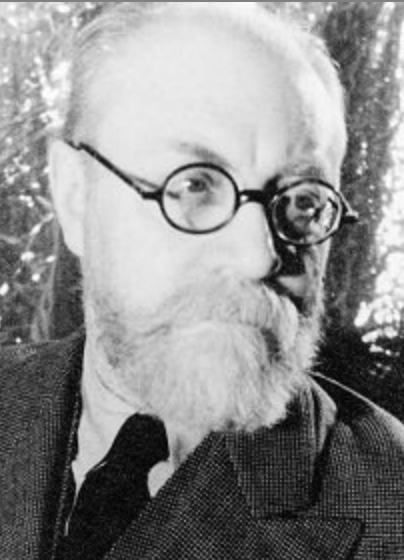On this date in 1869, artist Henri Émile Benoît Matisse was born in Le Cateau, Picardy, France. Although he had studied for the law, Matisse discovered his passion for painting while convalescing from a serious illness at age 21. Matisse studied the work of Cezanne, Monet and Seurat and worked with Paul Signac and Andre Derain.
In 1905 he was dubbed King of the Fauvists (“Wild Beasts”), despite his gentlemanly habits. Fauvism was characterized by intense color and a faux-primitive style that shocked the art world. In 1906 he unveiled his most famous work, “The Joy of Life.”
With the model Caroline Joblau, he had a daughter, Marguerite, born in 1894. In 1898, he married Amélie Noellie Parayre; the two raised Marguerite together and had two sons, Jean (born 1899) and Pierre (born 1900). He was awarded the French Legion of Honor in 1925.
Amélie, estranged from Matisse, was a typist for the French Underground during World War II and was jailed for six months. Marguerite, who was active in the resistance, was tortured by the Gestapo and sentenced to the Ravensbrück concentration camp in Germany but managed to escape from the train.
In 1941 he was diagnosed with duodenal cancer and was confined the rest of his life to a wheelchair but never gave up his art. Biographer Henry Spurling in The Unknown Matisse (1998) called Matisse “a staunch atheist.” He died at age 84 and is buried in the cemetery of the Monastère Notre Dame de Cimiez in Nice. (D. 1954)


